Burnaby Housing Types Explained

Why Understanding Burnaby's Housing Options Is Important
Burnaby, one of British Columbia's most dynamic and sought-after cities, offers a broad array of housing types to accommodate its diverse population. Whether you're a family seeking a spacious home, a professional looking for a convenient condo, or an investor eyeing opportunities in the housing market, understanding the various housing options is critical.
Each housing type in Burnaby comes with distinct features, benefits, and challenges. By familiarizing yourself with these options, you can make informed decisions that align with your lifestyle, budget, and long-term goals. With housing diversity that caters to both affordability and luxury, Burnaby is a city where anyone can find their ideal home.
Who This Guide Is For (Renters, Buyers, and Investors)
This guide is tailored for anyone navigating Burnaby's housing market, including:
- Renters: Looking to understand the range of affordable and premium rental options in the city, with current 2025 rental rates and trends.
- Homebuyers: Seeking the perfect home type that balances location, amenities, and budget in Burnaby's diverse neighborhoods.
- Investors: Interested in learning about lucrative housing options in Burnaby's thriving real estate market, with up-to-date price trends and market statistics.
No matter your role, this guide will equip you with the knowledge needed to navigate Burnaby's housing landscape confidently.
Burnaby's Housing Landscape
Overview of Burnaby's Housing Diversity
Burnaby is a city celebrated for its unique blend of urban and suburban living. Its housing market reflects this diversity, offering everything from high-rise condos in bustling city centers to charming single-family homes in quieter neighborhoods. The city's housing options cater to varying budgets, preferences, and needs, making it an attractive destination for a wide range of residents.
As of 2025, Burnaby ranks as the 8th most expensive city in Greater Vancouver, with an average house price of $1,099,203. However, the median price of $815,000 indicates that there are still many affordable options available. The market has shown steady growth, with a 10.1% monthly increase and a 1.8% yearly increase as of March 2025.
Whether you're seeking a spacious townhouse, a modern condo, or a quaint laneway home, Burnaby's housing ecosystem ensures there's something for everyone. The variety also mirrors the city's commitment to sustainable development and urban planning, aiming to balance density with livability.
Major Neighborhoods and Their Unique Housing Styles
Burnaby's neighborhoods each have distinct characteristics, offering housing options that reflect their unique personalities. Here's a look at some of the city's key areas:
Brentwood:
Known for its urban flair, Brentwood offers a mix of high-rise condos (60%), modern townhouses (20%), and single-family homes (20%). Its central location and proximity to shopping centers like The Amazing Brentwood make it a hotspot for young professionals and families alike.
Metrotown:
As Burnaby's largest commercial hub, Metrotown boasts a vibrant housing market dominated by sleek high-rise condominiums (65%) and townhouses (15%), with some single-family homes (20%). The area is ideal for those who value convenience, with SkyTrain access and a variety of amenities at their doorstep.
Burnaby Heights:
This charming neighborhood is known for its family-friendly atmosphere and a blend of single-family homes (45%), townhouses (25%), and low-rise apartment buildings (30%). Burnaby Heights combines a small-town feel with urban convenience, making it a popular choice for families and retirees.
Lougheed:
The Lougheed area features a mix of condos (55%), townhouses (25%), and single-family homes (20%), offering diverse options for various budgets and preferences. Its excellent transit connections make it a convenient location for commuters.
Edmonds:
This evolving neighborhood offers a balanced mix of housing types with condos (45%), townhouses (30%), and single-family homes (25%). It's becoming increasingly popular for its community feel and relative affordability.
South Burnaby:
This area maintains a more suburban character with a higher proportion of single-family homes (35%) and townhouses (30%), while still offering condo options (35%). It's popular with families seeking more space and a quieter environment.
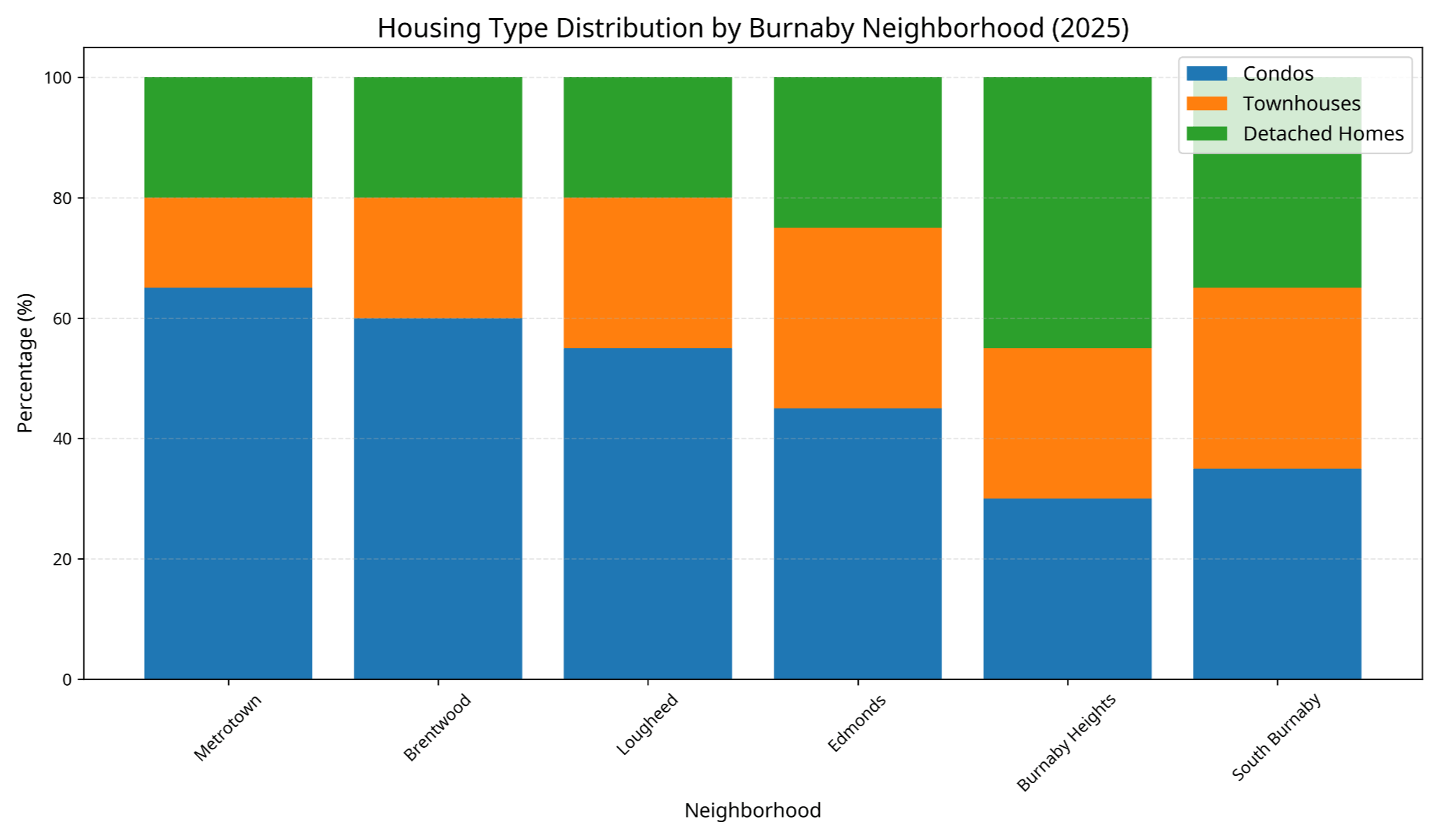
Figure 1: Housing Type Distribution by Burnaby Neighborhood (2025)
Burnaby's diverse neighborhoods ensure that residents can find housing that aligns with their unique preferences, whether they seek the hustle and bustle of urban living or the tranquility of suburban life.
Single-Family Homes
What Defines a Single-Family Home?
A single-family home is a standalone residential property designed to house one family. It typically includes private outdoor spaces such as a yard or garden and does not share walls, utilities, or entrances with neighboring properties. Single-family homes are often located in suburban neighborhoods, offering more space and privacy than other housing types.
These homes can vary greatly in size and design, from modest bungalows to luxurious multi-story houses. They are usually purchased outright, granting full ownership of both the building and the land it sits on.
Benefits of Single-Family Homes
Single-family homes are highly sought after for their numerous benefits, including:
- Privacy: Unlike attached housing, single-family homes provide complete separation from neighbors, offering a greater sense of seclusion.
- Larger Yards: Many single-family homes feature expansive outdoor spaces, ideal for families, gardening, or entertaining.
- Room for Customization: As the sole owner, you have the freedom to modify or renovate the property to suit your lifestyle and aesthetic preferences.
- Potential for Value Appreciation: In Burnaby's market, single-family homes have shown steady value growth, with current average prices ranging from $1.9M to $2.2M depending on the area.
Challenges of Single-Family Homes
While attractive, single-family homes also come with some challenges:
- High Cost: These homes often come with a higher price tag, especially in competitive markets like Burnaby where the average price is approximately $2.1 million in 2025.
- Maintenance: Homeowners are solely responsible for all upkeep, including landscaping, repairs, and exterior care.
- Property Taxes: Single-family homes tend to incur higher property taxes due to their larger size and land value.
- Location Trade-offs: In Burnaby, single-family homes in central locations command premium prices, often requiring buyers to consider more peripheral neighborhoods for affordability.
Price Trends for Single-Family Homes in Burnaby
The market for single-family homes in Burnaby has seen steady demand, reflecting the city's desirability as a residential location. Recent trends indicate an increase in average prices, driven by limited inventory and strong demand.
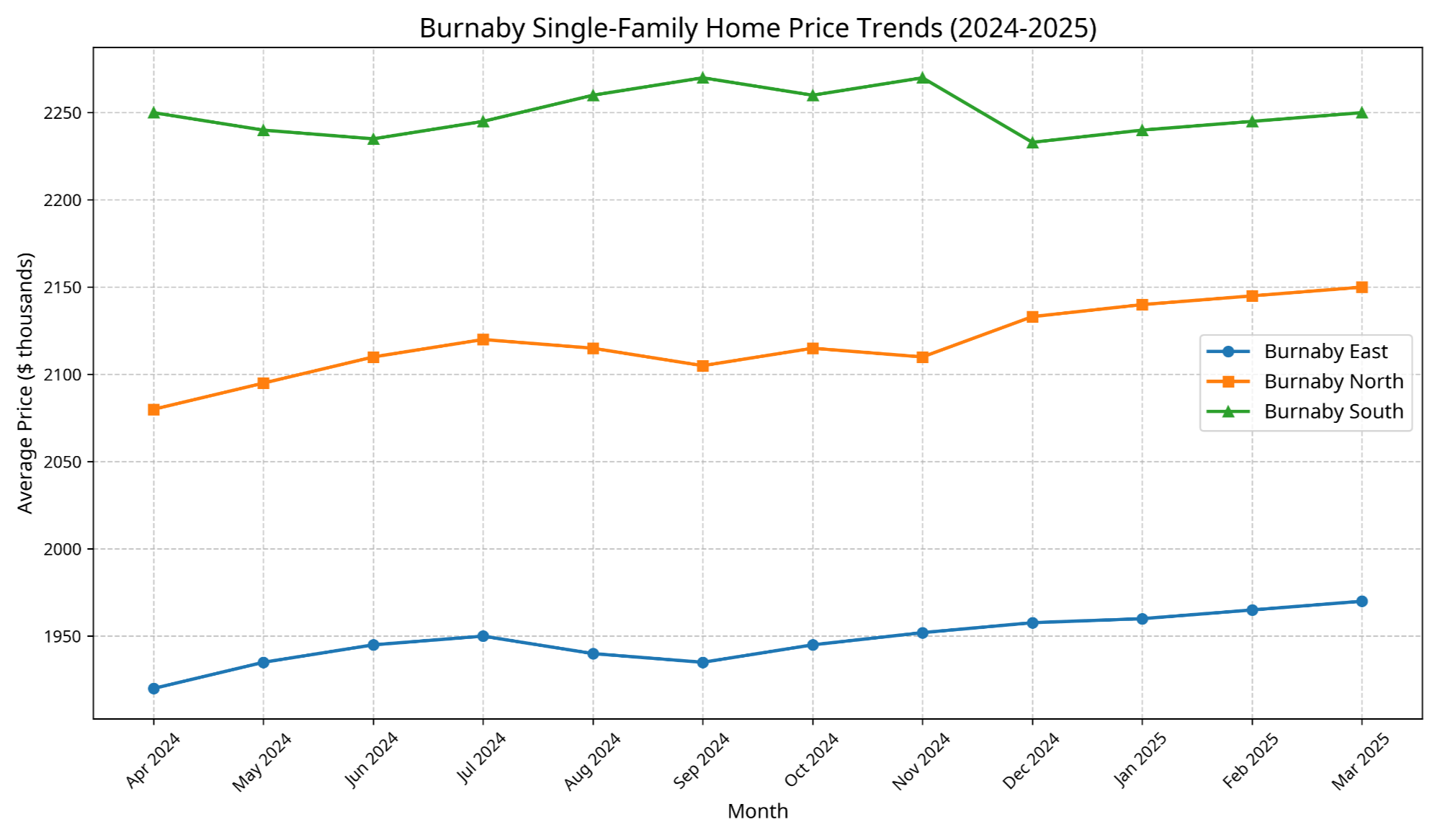
Figure 2: Burnaby Single-Family Home Price Trends (2024-2025)
As of March 2025, single-family home prices vary by area:
- Burnaby East: $1,970,000 (showing a steady upward trend)
- Burnaby North: $2,150,000 (increasing after some fluctuations)
- Burnaby South: $2,250,000 (stabilizing after a dip in late 2024)
This chart highlights the year-over-year price fluctuations for single-family homes, providing a clear picture of market dynamics across Burnaby's different regions.
Townhouses
What Are Townhouses?
Townhouses, or row houses, are multi-level homes that share walls with adjacent properties but maintain individual entrances. They are often found in planned communities and combine some of the benefits of single-family homes with the affordability of attached housing.
Townhouses typically include features such as small private yards, garages, and access to shared amenities within the community, like parks or clubhouses. In Burnaby, townhouses represent approximately 20-30% of the housing stock across different neighborhoods.
Advantages of Townhouses
Townhouses appeal to many buyers due to their unique advantages:
- Affordability: Compared to single-family homes, townhouses offer a more budget-friendly entry point into homeownership, with an average price of $950,000 in Burnaby as of 2025.
- Community Living: Many townhouse developments foster a sense of community with shared spaces and organized events.
- Moderate Maintenance: Homeowners usually maintain the interior and small outdoor spaces, while strata or homeowner associations manage common areas.
- Location Options: Townhouses can be found throughout Burnaby, with higher concentrations in Edmonds (30%) and South Burnaby (30%), offering various neighborhood choices.
Limitations of Townhouses
Despite their appeal, townhouses have some limitations:
- Strata Restrictions: Many townhouses are part of strata developments, which come with rules and regulations that may limit personalization or certain activities.
- Shared Walls: Unlike single-family homes, townhouses share walls with neighbors, which can result in less privacy and potential noise issues.
- Strata Fees: Monthly fees are required to maintain common areas, adding to the overall housing cost (though typically lower than condo strata fees).
Who Should Consider Buying a Townhouse?
Townhouses are an excellent option for:
- First-Time Homebuyers: Their lower price point compared to single-family homes makes townhouses a popular choice for those entering the market.
- Small Families: Townhouses offer sufficient space and private outdoor areas for young families without the high costs of larger homes.
- Downsizers: Retirees or individuals looking for a more manageable property size and community-oriented living often find townhouses appealing.
By balancing affordability, convenience, and a moderate level of responsibility, townhouses are a versatile housing option that caters to a wide range of buyers in Burnaby's diverse market.
Condominiums
What Is a Condo?
A condominium, or condo, is a privately owned unit within a multi-unit building or complex. Condos are distinct from apartments in that ownership extends to the unit itself, while common areas, such as hallways, gyms, and swimming pools, are shared and maintained collectively through strata or homeowners' associations.
Condos are an attractive option for those looking for affordable homeownership without the responsibilities of standalone property maintenance. In Burnaby, condos represent the largest segment of the housing market, particularly in urban centers like Metrotown (65%) and Brentwood (60%).
Why Condos Are Popular in Burnaby
Condominiums are among the most sought-after housing options in Burnaby for several reasons:
- Access to Amenities: Many condo developments feature high-quality amenities such as fitness centers, swimming pools, and social spaces, enhancing the lifestyle of residents.
- Affordability: Compared to single-family homes and townhouses, condos generally have a lower price point (averaging $815,000 in 2025), making them a popular choice for first-time buyers and downsizers.
- Urban Convenience: Condos are often located near public transportation, shopping centers, and business hubs, providing unmatched accessibility.
- Security Features: Many condo buildings offer enhanced security measures like controlled access and concierge services, providing peace of mind for residents.
Downsides of Condo Living
While condos offer many advantages, they also come with certain downsides:
- Strata Fees: Monthly fees are required to cover the maintenance of common areas and amenities, which can add significantly to housing costs (averaging $350-$550 monthly in Burnaby).
- Limited Space: Condos typically offer less living space compared to single-family homes or townhouses, which may not be ideal for families or those needing extra room.
- Rules and Restrictions: Strata regulations can limit how you use or modify your unit, which may feel restrictive for some homeowners.
- Potential for Special Assessments: Owners may occasionally face additional costs for major repairs or improvements to the building.
Current Market Trends for Condos
Burnaby's condo market has shown consistent growth due to increasing demand for affordable and accessible housing options. Recent trends indicate:
- Rising sales in high-demand neighborhoods such as Brentwood and Metrotown.
- Steady increases in average condo prices, reflecting the city's desirability.
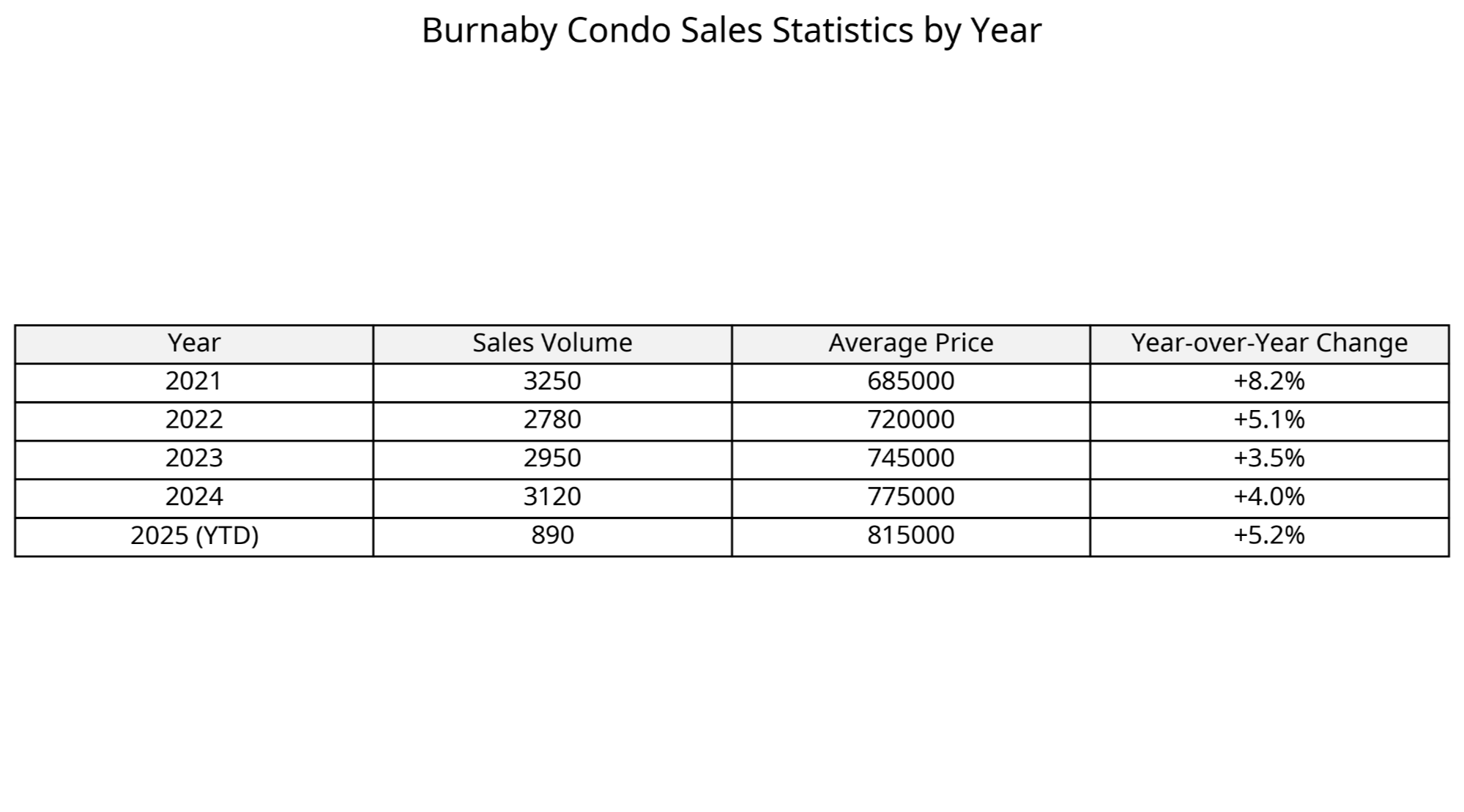 Figure 3: Burnaby Condo Sales Statistics by Year
Figure 3: Burnaby Condo Sales Statistics by Year
This table provides a snapshot of sales volume, average prices, and year-over-year changes in Burnaby's condo market from 2021 to 2025. The data shows consistent price growth, with the average condo price reaching $815,000 in early 2025, representing a 5.2% increase from the previous year.
Duplexes and Triplexes
What Are Duplexes and Triplexes?
Duplexes and triplexes are multi-unit residential properties designed to accommodate two or three separate households, respectively. Each unit typically has its own entrance, living spaces, and amenities. While they may appear similar to single-family homes, these properties are designed for shared ownership or rental purposes.
These homes are popular among extended families, investors, and those seeking additional income through rental opportunities. In Burnaby, they represent a smaller but growing segment of the housing market as the city encourages gentle density increases.
Benefits of Multi-Unit Housing
Duplexes and triplexes offer several advantages:
- Income Potential: Owners can rent out one or more units, creating a reliable stream of income to offset mortgage costs. With Burnaby's strong rental market (average two-bedroom rental at $2,986/month), this can be substantial.
- Housing Extended Family: These properties are ideal for multi-generational living, allowing family members to live close while maintaining privacy.
- Flexibility: The option to live in one unit while renting out others provides financial and lifestyle versatility.
- Investment Value: Multi-unit properties often offer better return on investment compared to single-family homes, making them attractive to investors.
Considerations for Duplex and Triplex Owners
Before investing in a duplex or triplex, it's essential to consider the following:
- Shared Property Maintenance: While ownership includes your unit, shared areas like driveways or gardens require cooperative upkeep with other residents or tenants.
- Zoning and Regulations: Ensure the property complies with local zoning laws, especially if planning to rent out units. Burnaby has specific regulations governing multi-unit dwellings.
- Initial Costs: Duplexes and triplexes often have higher upfront costs compared to single-unit properties, though they offer long-term financial benefits.
- Tenant Management: If renting units, owners must be prepared for landlord responsibilities, including tenant selection, maintenance requests, and potential conflicts.
Duplexes and triplexes strike a balance between homeownership and investment, making them an attractive choice for those seeking both flexibility and potential financial gains in Burnaby's diverse housing market.
Apartments
Types of Apartments in Burnaby
Burnaby offers a wide variety of apartment styles to suit different preferences and budgets:
- High-Rise Apartments: Found in areas like Metrotown and Brentwood, these buildings often feature modern designs, amenities such as gyms and pools, and stunning city or mountain views. They typically rise 20+ stories and offer various unit sizes.
- Low-Rise Apartments: Typically located in quieter, more residential areas, low-rise apartments offer a balance between affordability and accessibility, often with fewer shared amenities but more community feel.
- Basement Suites: A popular rental option, basement suites are located in single-family homes. They are often more affordable (averaging $1,800-$2,000/month) and provide a cozier living experience but may lack natural light or extensive amenities.
Rental Market Trends for Apartments
Burnaby's rental market has remained robust due to the city's growing population and proximity to Vancouver. Key trends include:
- Increasing Demand: Apartments in transit-friendly areas like Metrotown and Lougheed continue to see high demand.
- Rental Rates: As of March 2025, average rental prices in Burnaby are:
- One-bedroom: $2,367 (3.6% decrease from February 2024)
- Two-bedroom: $2,986 (3% decrease from February 2024)
- Three-bedroom: $3,420 (1.5% increase year-over-year)
- Preference for Transit-Oriented Apartments: Properties near SkyTrain stations are highly sought after, as residents prioritize convenience and connectivity.
These trends highlight the importance of location and accessibility when searching for an apartment in Burnaby.
Rent vs. Buy: Apartment Considerations
When deciding whether to rent or buy an apartment, consider the following:
Renting Advantages:
- Lower upfront costs and flexibility for those uncertain about long-term commitments.
- Ideal for students, young professionals, or those saving for homeownership.
- No responsibility for major repairs or maintenance.
- Ability to live in premium locations that might be unaffordable to purchase.
Buying Advantages:
- Potential for equity growth and long-term financial stability.
- Access to better financing options in a stable market.
- Freedom to customize and renovate the space to your preferences.
- Protection against rent increases and eviction concerns.
Evaluate your financial situation, lifestyle needs, and long-term goals before making a decision. Renting may suit those seeking flexibility, while buying is a worthwhile option for those ready to invest in property in Burnaby's appreciating market.
Laneway Homes and Coach Houses
What Are Laneway Homes?
Laneway homes, also known as coach houses, are small detached homes typically built on the same property as a larger primary residence. These homes are often located along rear laneways and are an excellent solution for maximizing land use in urban areas.
Laneway homes provide a more compact and energy-efficient living option, often featuring one or two bedrooms, a bathroom, and a small living area. In Burnaby, these homes have become increasingly popular as the city embraces densification strategies, with an average value of approximately $650,000 in 2025.
Who Should Consider Laneway Living?
Laneway homes are well-suited for:
- Small Families: These homes provide enough space for small households while remaining affordable and manageable.
- Downsizers: Empty nesters or retirees looking to simplify their living arrangements without sacrificing independence.
- Young Professionals: Individuals seeking an affordable entry into the housing market while enjoying the benefits of detached living.
- Income Property Owners: Homeowners looking to generate rental income while maintaining proximity to tenants.
Pros and Cons of Laneway Homes
Pros:
- Affordability: Laneway homes are often more affordable than single-family homes, making them an attractive option for budget-conscious buyers or renters.
- Compact Living: These homes promote a minimalist lifestyle, reducing energy consumption and maintenance responsibilities.
- Flexibility: Property owners can use laneway homes for rental income or as housing for family members.
- Privacy: Unlike basement suites, laneway homes offer complete separation from the main dwelling.
Cons:
- Limited Space: The compact design may feel restrictive for larger households or those accustomed to more spacious living.
- Privacy Concerns: Sharing the property with the main house can sometimes limit privacy.
- Zoning Restrictions: Not all areas in Burnaby permit the construction of laneway homes, and building one may involve navigating complex regulations.
- Construction Costs: While more affordable to purchase, building a new laneway home can be costly relative to its size.
Laneway homes offer a practical solution for those prioritizing affordability and sustainability, making them an increasingly popular option in Burnaby's diverse housing market.
Co-Op Housing
How Does Co-Op Housing Work?
Co-operative housing, or co-op housing, is a unique type of housing model where residents collectively own and manage the property. Instead of purchasing an individual unit outright, members buy a share in the co-op, which grants them the right to live in a specific unit. Decisions regarding the property are made collectively by the members, fostering a sense of community and shared responsibility.
Unlike traditional ownership, co-op residents pay monthly fees that cover maintenance, utilities, and other shared expenses, making this an affordable housing option. In Burnaby, co-op housing represents a small but important segment of the housing market, with an average share price of approximately $450,000 in 2025.
Benefits of Co-Op Housing
Co-op housing offers several advantages for residents:
- Lower Costs: Co-op housing is generally more affordable than traditional homeownership or renting, thanks to the shared ownership structure and non-profit model.
- Community Living: Residents actively participate in decision-making, fostering a collaborative and tight-knit community.
- Security: Co-op housing provides long-term stability as members cannot be evicted arbitrarily, unlike renters.
- Shared Resources: Many co-ops offer shared amenities like gardens, community spaces, and childcare facilities that might be unaffordable individually.
Drawbacks of Co-Op Housing
While co-op housing has its advantages, there are also notable drawbacks:
- Limited Resale Value: Selling a share in a co-op often comes with restrictions, and the value typically appreciates slower than traditional real estate.
- Approval Process: Prospective residents must go through an interview or approval process, which can be time-consuming and subjective.
- Shared Decision-Making: While collaborative, collective decision-making can sometimes lead to disagreements or delays in property management.
- Financial Contribution: Members may occasionally be required to contribute additional funds for major repairs or improvements.
Co-op housing is ideal for individuals seeking affordable, community-oriented living but may not be the best fit for those prioritizing financial investment or personal autonomy in housing decisions.
Rental Housing Options
Key Types of Rentals in Burnaby
Burnaby's rental market features a wide variety of housing options to cater to different needs:
- Single-Family Homes: Offer spacious living with private yards, ideal for families or those needing extra space. Average monthly rent for a whole house ranges from $3,500 to $4,500.
- Apartments: Range from high-rise buildings with modern amenities to low-rise complexes in quieter areas. Current rental rates average $2,367 for one-bedroom and $2,986 for two-bedroom units.
- Shared Housing: Includes basement suites, rooms in shared homes, or co-living spaces, often appealing to students or individuals on a budget. Room rentals typically range from $900 to $1,400 per month.
With diverse rental options, Burnaby accommodates various lifestyles and budgets.
Pros and Cons of Renting in Burnaby
Pros:
- Flexibility: Renting allows residents to relocate more easily, which is particularly beneficial for students, professionals, or those uncertain about long-term plans.
- Lower Initial Costs: Renting requires less upfront financial commitment compared to buying, as there's no need for a large down payment.
- Access to Amenities: Many rental properties, especially apartments, include access to gyms, pools, and other amenities.
- Maintenance-Free Living: Landlords are responsible for major repairs and property maintenance.
Cons:
- Lack of Ownership: Renting does not build equity, meaning long-term financial gains are limited compared to homeownership.
- Rent Increases: Tenants are subject to potential annual rent hikes, which may strain budgets over time.
- Limited Control: Renters may face restrictions on property modifications or pet ownership based on landlord or building rules.
- Housing Insecurity: Renters may face the possibility of having to move if the landlord decides to sell or repurpose the property.
Renting is a practical choice for those seeking flexibility and lower costs, but it lacks the financial and personal benefits of ownership.
Burnaby's Rental Market Overview
Burnaby's rental market remains highly competitive due to the city's proximity to Vancouver and its strong job market. Key trends include:
- High Demand: Rental properties in transit-friendly neighborhoods like Metrotown and Brentwood are particularly popular, driving up prices.
- Rental Rates: Burnaby has the second-highest rental rates in Canada, just behind Vancouver. However, recent trends show a slight decrease, with one-bedroom rentals dropping 3.6% year-over-year.
- Emerging Options: New developments are introducing purpose-built rental housing, offering modern amenities and catering to young professionals and families.
- Vacancy Rates: Burnaby maintains a tight rental market with vacancy rates below 2%, though this has improved slightly from previous years.
Burnaby's rental landscape is shaped by its urban appeal, diversity of options, and increasing demand, making it essential for renters to act quickly and stay informed when searching for a property.
Zoning and Urban Development in Burnaby
Understanding Burnaby's Zoning Regulations
Zoning regulations in Burnaby play a critical role in shaping the city's housing landscape. These rules determine how land can be used and what types of housing can be developed in specific areas. Burnaby's zoning is categorized into residential (single-family, multi-family), commercial, industrial, and mixed-use zones, each with its own guidelines for building types, density, and usage.
For example:
- Single-Family Residential Zones (R1, R2): Primarily allow detached homes with limitations on lot size and building height.
- Multi-Family Residential Zones (RM): Permit townhouses, condos, and apartment buildings, often in higher-density areas near transit hubs.
- Mixed-Use Zones (C2, C3): Combine residential and commercial spaces, encouraging vibrant communities with housing, shopping, and dining in close proximity.
These regulations aim to balance growth, environmental sustainability, and livability, ensuring that Burnaby remains an attractive and functional place to live.
New Housing Projects in Development
Burnaby continues to experience significant urban development, with new housing projects designed to meet the needs of its growing population. Key projects include high-rise condo towers in Brentwood, purpose-built rental buildings in Metrotown, and townhouses in South Burnaby.
As of 2025, there are over 19,000 rental units across all stages of the development process in Burnaby, of which 16,500 are net new units. This significant increase in housing supply aims to address affordability concerns and accommodate population growth.
How Zoning Affects Affordability and Availability:
- Affordability: Higher-density zoning in transit-accessible areas allows for more affordable housing options, such as condos and rentals, by increasing supply.
- Availability: Mixed-use zoning encourages diverse housing developments that cater to different income levels, from luxury condos to subsidized housing.
- Sustainability: Transit-oriented developments (TODs) reduce reliance on cars, promoting eco-friendly living and reducing urban sprawl.
Zoning changes and new developments are key drivers of housing availability and affordability, making it essential for residents and buyers to stay informed about upcoming projects and policy changes in Burnaby.
Tips for Choosing the Right Housing Type
Matching Your Lifestyle to the Right Housing Type
Finding the perfect housing type begins with understanding your lifestyle needs. Consider:
- Privacy Needs: Single-family homes are ideal for those who prioritize privacy, while condos and townhouses are better for individuals comfortable with shared spaces.
- Family Size: Large families often require more space, making single-family homes or duplexes suitable. Smaller households may find condos or laneway homes more practical.
- Convenience: Apartments and condos in central areas offer easy access to transit and amenities, ideal for young professionals or retirees.
- Maintenance Preferences: Those who dislike property maintenance might prefer condos or rentals, while those who enjoy gardening and home projects might prefer single-family homes.
Aligning housing choices with your day-to-day living requirements ensures comfort and satisfaction.
Balancing Budget and Location
Budget and location are two of the most critical factors in choosing a home:
Budget Considerations:
- Factor in additional costs such as strata fees, property taxes, and maintenance.
- Assess whether renting or buying fits your financial situation.
- Consider the long-term financial implications of different housing types.
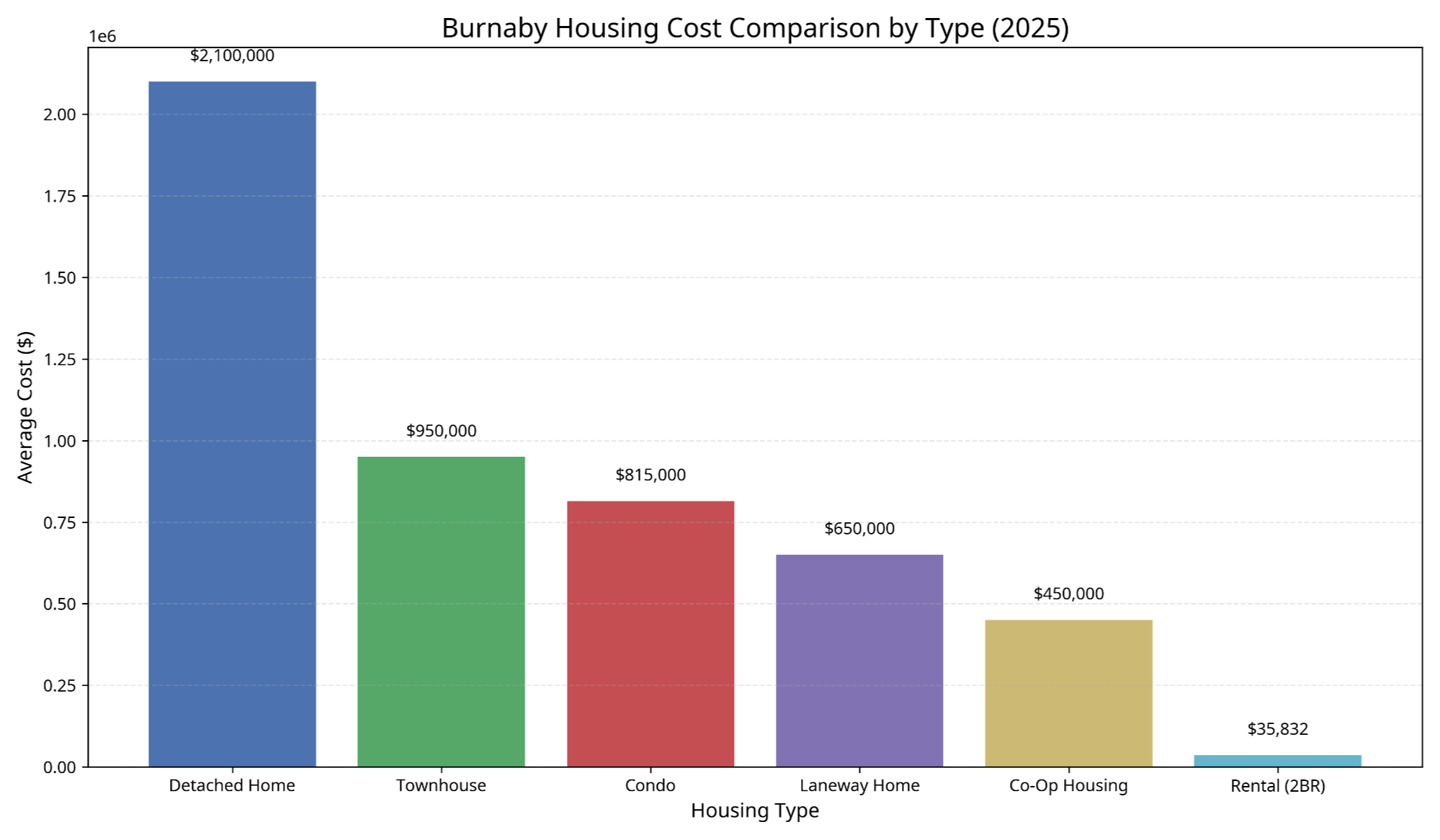
Figure 5: Burnaby Housing Cost Comparison by Type (2025)
Location Preferences:
- Urban hubs like Metrotown offer high accessibility and amenities but come with higher costs.
- Suburban areas like Burnaby Heights provide more affordable options with a quieter environment.
- Consider commute times, proximity to schools, parks, and essential services.
Striking the right balance between budget and location ensures you get the most value for your investment.
Long-Term Goals: Renting vs. Owning
Deciding between renting and owning depends on your financial and lifestyle objectives:
- Renting: Ideal for those seeking flexibility or saving for a future down payment. Renting also works well for short-term residents or those new to the area.
- Owning: Offers long-term financial benefits through equity growth. It's a suitable option for those with stable income and plans to stay in Burnaby for several years.
Evaluate your long-term goals and current circumstances to determine whether renting or owning aligns best with your future plans. By taking these factors into account, you can make a well-informed decision tailored to your unique needs.
Conclusion
Summary of Key Takeaways
Burnaby's housing market offers a wide range of options to meet the diverse needs of its residents. Here's a quick recap of the main housing types and their suitability:
- Single-Family Homes: Ideal for families seeking privacy, space, and room for customization, but they come with higher costs (averaging $2.1 million) and maintenance responsibilities.
- Townhouses: A great middle ground, offering affordability (averaging $950,000) and community living, but with some shared walls and strata restrictions.
- Condominiums: Perfect for individuals or small families who value affordability (averaging $815,000), amenities, and urban convenience, though strata fees and space limitations should be considered.
- Duplexes and Triplexes: Suitable for extended families or investors, providing flexibility and income potential, though shared maintenance is a factor.
- Laneway Homes: Compact and affordable (averaging $650,000), ideal for downsizers or small families, with some trade-offs in space and privacy.
- Co-Op Housing: A cost-effective (averaging $450,000), community-focused option with limitations on resale and approval processes.
- Rental Housing: Flexible and accessible for a variety of budgets and lifestyles, especially for those not ready to commit to homeownership, with one-bedroom units averaging $2,367 monthly.
Understanding the pros and cons of each type helps you choose a home that matches your needs and goals.
Making an Informed Decision
Choosing the right housing type requires careful consideration of your personal priorities. Here are some tips to guide your decision:
- Assess Your Lifestyle Needs: Consider privacy, space, and proximity to amenities.
- Determine Your Budget: Account for upfront costs, ongoing expenses, and future financial plans.
- Think Long-Term: Align your choice with your career, family plans, and potential for relocation.
- Seek Expert Advice: Consult with real estate professionals to understand market trends and opportunities in Burnaby.
By aligning your housing choice with your financial situation, lifestyle preferences, and long-term aspirations, you can make a decision that feels both practical and rewarding.
Encouragement to Explore Burnaby's Housing Market
Burnaby is a city brimming with opportunities for renters, buyers, and investors alike. Its vibrant neighborhoods, diverse housing options, and convenient access to urban amenities make it one of British Columbia's most desirable places to live.
Whether you're looking for a family home in a quiet neighborhood, a modern condo in the heart of the city, or an investment property with high potential, Burnaby offers something for everyone. Take the time to explore its housing market, and you're bound to find a property that fits your unique needs and lifestyle.
FAQs About Burnaby Housing Types
What's the difference between a townhouse and a duplex?
A townhouse shares walls with neighboring units in a row-like structure, while a duplex is a building split into two separate units, often with more space and privacy. Townhouses are typically part of larger developments with multiple units, while duplexes are often standalone buildings with just two units. In Burnaby, townhouses average around $950,000, while duplexes can range from $1.2-1.5 million depending on location and size.
Which Burnaby neighborhoods are best for young families?
Neighborhoods like Burnaby Heights and South Burnaby are popular for families due to their access to schools, parks, and spacious housing options. Burnaby Heights offers a charming main street with local shops and restaurants, while South Burnaby provides more affordable single-family homes and good school catchments. Both areas have a higher percentage of detached homes (35-45%) compared to areas like Metrotown or Brentwood.
How do strata fees vary between condos and townhouses?
Strata fees for condos are often higher due to additional amenities like gyms and pools. In Burnaby, condo strata fees typically range from $350-$550 monthly, while townhouses may have lower fees of $250-$400 monthly but still include maintenance costs for shared spaces. The age and size of the building, amenities offered, and contingency fund status all affect fee amounts.
Are laneway homes a good investment in Burnaby?
Yes, laneway homes can be a good investment due to their affordability (averaging $650,000) and rental income potential. However, zoning restrictions and initial construction costs should be considered. Burnaby's continued population growth and housing demand make laneway homes attractive for both investors and homeowners looking to maximize property value or accommodate extended family.
What resources are available for first-time homebuyers in Burnaby?
First-time homebuyers can access government programs like the First-Time Home Buyer Incentive, BC Housing's Home Partnership Program, and resources from local real estate agents for guidance and market insights. Additionally, Burnaby offers homeowner grant programs that can reduce property taxes for eligible residents. Financial institutions also provide specialized mortgage products for first-time buyers with favorable terms and lower down payment requirements.
Categories
Recent Posts



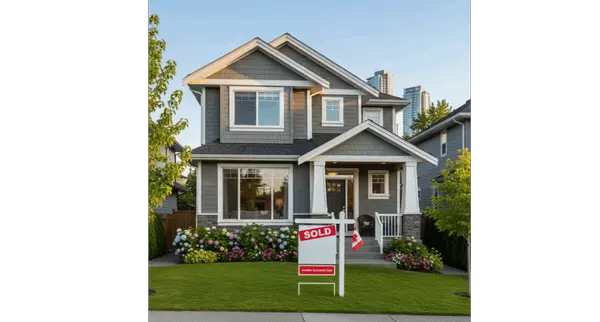


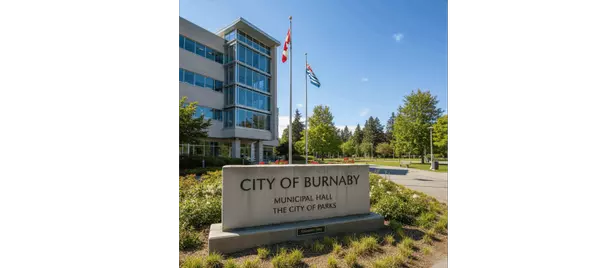

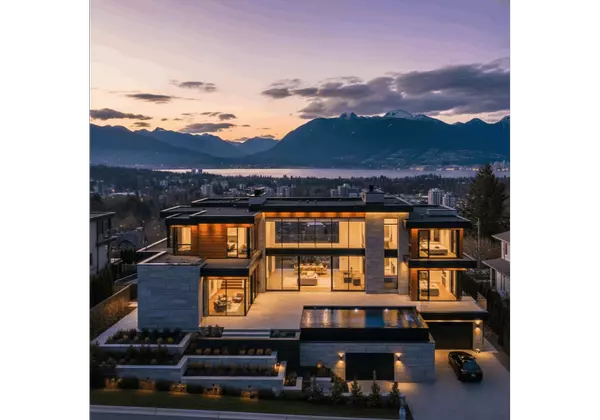
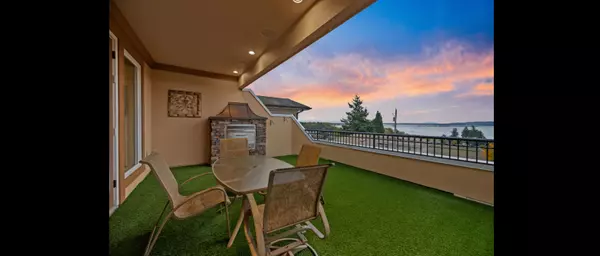

"My job is to find and attract mastery-based agents to the office, protect the culture, and make sure everyone is happy! "
